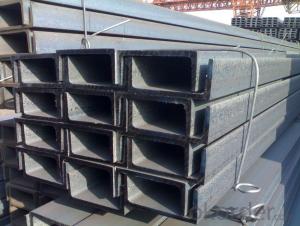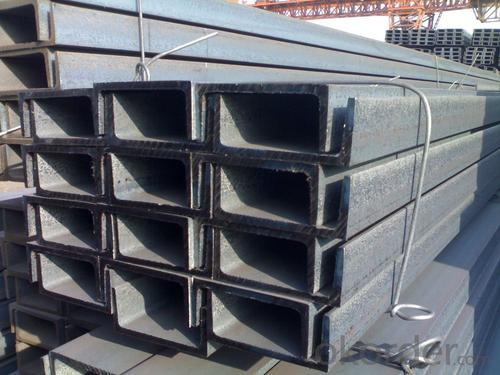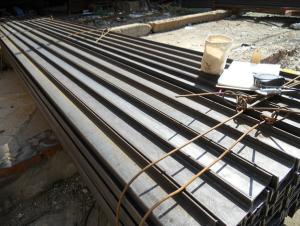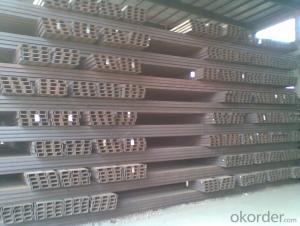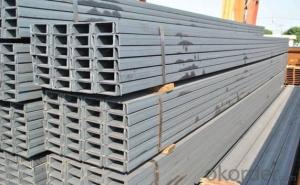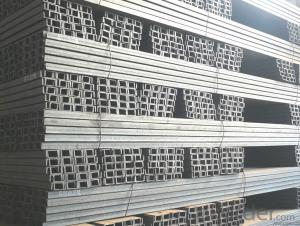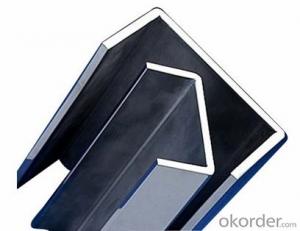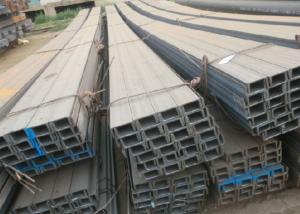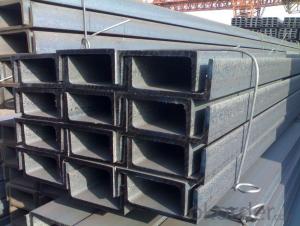Steel U Channel With Higher Yield Point
- Loading Port:
- China main port
- Payment Terms:
- TT or LC
- Min Order Qty:
- 50 m.t.
- Supply Capability:
- 50000 m.t./month
OKorder Service Pledge
OKorder Financial Service
You Might Also Like
Description
In the production of steel products, steel is molded and reshaped with different machinery at different temperatures. One process is steel rolling, which involves metal stock passing through a pair of rolls. Rolling produces flat steel sheets of a specific thickness, and the process is classified according to the temperature at which the metal is rolled. If the temperature of the metal is above its recrystallization temperature, or the temperature at which the grain structure of the metal can be altered, then the process is termed as hot rolling. If the temperature of the metal is below its recrystallization temperature, the process is termed as cold rolling.
Like cold rolling, cold drawing is performed at room temperature, but instead of producing a flat object like a coke can, cold drawing makes steel into the form of a wire like the spokes of a wheel or a paper clip. To start the process, Steel is usual hammered and rolled so that it can be fit through a die; a tool that turns the steel mass into a wire. The room temperature steel is pulled through the die which reshapes it into a thinner shape while maintaining the same volume. It is similar to the idea of syrup flowing out of a bottle through a tube in that it changes shape but not volume, but instead of squeezing the metal, it is pulled out. In order to get the wire down to the right diameter, it usually requires more than one pass through different dies.
Chemical Compostion
Grade | Element(%) | |||
C | Mn | P | S | |
SS330 | -- | -- | ≦0.050 | ≦0.050 |
SS400 | ||||
SS490 | ||||
SS540 | ≦0.30 | ≦1.60 | ≦0.040 | ≦0.040 |
Usage/Applications
Channel Steel is usually used for building structure, vehicle manufacturing and other industrial structure and often used with i beam.
In details, the channel steel belongs to carbon structural steel which is applied to in the field of construction and machinery. The channel steel is usually used for arch-itechtural structure, and they could be welded in order to support or hang a vari-ety of facilities. They are also usually used in combination with I beam. Generally,the channel steel must possess perfect welding property, riveting property and mechanical property and so on.
FAQ:
Q1: Why buy Materials & Equipment from OKorder.com?
A1: All products offered byOKorder.com are carefully selected from China's most reliable manufacturing enterprises. Through its ISO certifications, OKorder.com adheres to the highest standards and a commitment to supply chain safety and customer satisfaction.
Q2: How do we guarantee the quality of our products?
A2: We have established an advanced quality management system which conducts strict quality tests at every step, from raw materials to the final product. At the same time, we provide extensive follow-up service assurances as required.
Q3: Can stainless steel rust?
A3: Stainless does not "rust" as you think of regular steel rusting with a red oxide on the surface that flakes off. If you see red rust it is probably due to some iron particles that have contaminated the surface of the stainless steel and it is these iron particles that are rusting. Look at the source of the rusting and see if you can remove it from the surface.
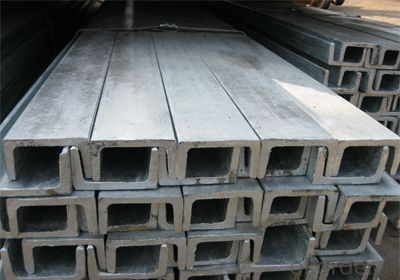
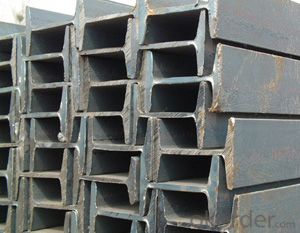
- Q: Galvanized steel plate, channel steel, angle steel how to take samples, how to submit?
- The symmetry type (such as steel I-beam, T steel), in the distance where the interception endpoint 1/6 length long 500 mm, 20 mm wide rectangular specimens, non symmetry type steel (such as steel, L steel), in the distance where the length of the endpoint 1/3 intercept long 500 mm, the width of the rectangle 20 mm specimens. Direct interception of local plate in from the outer ends of the 12.5 mm long 500 mm, 20 mm wide rectangular specimens. Take one for tensile test and one for cold bending test.
- Q: How do steel channels contribute to fire resistance in buildings?
- Steel channels contribute to fire resistance in buildings by providing structural stability and preventing the collapse of the building during a fire. They act as reinforcements within the building's framework, enhancing its ability to withstand high temperatures and preventing the spread of fire. Steel channels are designed to retain their strength even when exposed to extreme heat, which helps to maintain the structural integrity of the building and allows occupants more time to evacuate safely.
- Q: Is the track steel often called channel or construction steel?
- See what you do, oh. Anyway, with the "beam" on the general use of I-beamChannel steel is usually made of steel structures and is matched with other types of steel
- Q: How do steel channels perform in earthquake-prone areas?
- Steel channels perform well in earthquake-prone areas due to their high strength and ductility. They can effectively absorb and distribute seismic forces, providing enhanced resistance to structural damage. Additionally, steel channels can be designed to flex and bend during an earthquake, minimizing the risk of collapse and ensuring the safety of buildings and structures in these regions.
- Q: How about the Y-Y moment of inertia in the form of hot rolled channel steel Iy?
- Among them, H, B, D and T are the corresponding parameters on the standard. B leg root thickness, a thickness of leg point or T = (a + b) divided by 2, R for leg root radius, R leg tip radius, Z standard centroid value, ^2 said in front of the results in parentheses square, ^3 cube, X said after the power multiplied by the other the local sign is omitted, said by slash.
- Q: 16A channel steel size requirements are national standards Oh!
- The national standard for channel steels is "hot rolled steel" GB/T706-2008
- Q: What are the different industry standards for steel channels?
- There are several industry standards for steel channels, which are used to ensure consistency and quality in the manufacturing and usage of these structural components. Some of the commonly recognized standards for steel channels include: 1. American Standard Channels (C) - These steel channels are defined by the American Iron and Steel Institute (AISI) and are widely used in North America. The dimensions, properties, and tolerances for American Standard Channels are specified in ASTM A6/A6M. 2. European Standard Channels (UPN) - These steel channels are defined by the European Committee for Standardization (CEN) and are prevalent in Europe. The dimensions, properties, and tolerances for European Standard Channels are specified in EN 10365. 3. British Standard Channels (BS) - These steel channels are defined by the British Standards Institution (BSI) and are commonly used in the United Kingdom. The dimensions, properties, and tolerances for British Standard Channels are specified in BS 4-1. 4. Japanese Standard Channels (JIS) - These steel channels are defined by the Japanese Industrial Standards (JIS) and are widely used in Japan and other Asian countries. The dimensions, properties, and tolerances for Japanese Standard Channels are specified in JIS G 3192. 5. Australian/New Zealand Standard Channels (AS/NZS) - These steel channels are defined by the Standards Australia and Standards New Zealand organizations and are commonly used in Australia and New Zealand. The dimensions, properties, and tolerances for Australian/New Zealand Standard Channels are specified in AS/NZS 3679.1. It is important to note that these standards may slightly differ in terms of dimensional tolerances, chemical composition, mechanical properties, and designations. Therefore, understanding and adhering to the appropriate industry standard is crucial for ensuring compatibility and compliance with the specific requirements of a particular project or application involving steel channels.
- Q: Can steel channels be used for fencing systems?
- Yes, steel channels can be used for fencing systems. Steel channels are versatile and strong, making them an excellent choice for constructing fences. They can be used to build various types of fences, such as chain link fences, privacy fences, or decorative fences. Steel channels provide stability and durability to the fencing system, ensuring that it can withstand harsh weather conditions and potential impacts. Additionally, steel channels can be easily customized to fit different fence heights and designs. They can be welded, cut, and shaped according to specific requirements, making them adaptable to various fencing needs. Overall, steel channels offer a reliable and long-lasting solution for fencing systems.
- Q: How do steel channels perform in high-load applications?
- Due to their high strength and load-bearing capabilities, steel channels are exceptionally effective in high-load applications. Their design allows for efficient weight distribution, making them ideal for supporting heavy loads and enduring significant stresses. The structural integrity of steel channels ensures that they can handle the demands of high-load applications while ensuring safety and performance are not compromised. Steel channels find common usage in construction, automotive, and industrial sectors where the need to support heavy equipment, structures, or machinery arises. They are known for their robustness and durability, making them reliable and long-lasting even in extreme conditions. Moreover, steel channels exhibit excellent resistance to bending, twisting, and warping, making them suitable for withstanding dynamic loads and vibrations. In high-load applications, steel channels offer versatility as they are available in various sizes, shapes, and thicknesses. Engineers can select the most suitable channel for a specific application, ensuring an optimal fit for different load requirements. This flexibility in design allows engineers to optimize the load-bearing capacity while minimizing weight and material costs. Notably, steel channels possess good corrosion resistance, particularly when coated with protective treatments or finishes. This enables them to withstand harsh environmental conditions and maintain their performance over time. Additionally, steel channels can be easily welded, bolted, or fastened together, providing flexibility in construction and facilitating easy customization or modification as needed. To summarize, steel channels are highly reliable and efficient in high-load applications. Their strength, durability, versatility, and resistance to bending and corrosion make them an excellent choice for supporting heavy loads in various industries.
- Q: Are steel channels suitable for high-traffic areas?
- Yes, steel channels are suitable for high-traffic areas. Steel is a durable and strong material that can withstand heavy foot traffic and is resistant to wear and tear. Additionally, steel channels provide structural support and stability, making them ideal for areas with frequent and heavy use.
Send your message to us
Steel U Channel With Higher Yield Point
- Loading Port:
- China main port
- Payment Terms:
- TT or LC
- Min Order Qty:
- 50 m.t.
- Supply Capability:
- 50000 m.t./month
OKorder Service Pledge
OKorder Financial Service
Similar products
Hot products
Hot Searches
Related keywords
